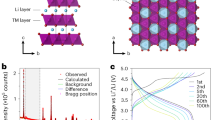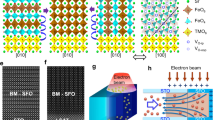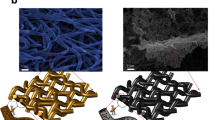Abstract
MEASUREMENTS of the rate of taking up of oxygen by barium films1 have been continued in an attempt to discover the mechanism of the growth of the oxide layer. The results obtained support the ionic theory of oxidation of metals developed by Mott2. In this theory it is supposed that positive metal ions and electrons diffuse from the metal through the oxide, the metal ions moving via interstitial positions in the oxide lattice. At the free surface of the oxide, these ions combine with adsorbed oxygen. In this way the thickness of the oxide layer is increased. In oxide films less than about 50 A. thick, the movement of ions is influenced principally by the strong electric field which is set up across the oxide because of the contact potential difference between the metal and the adsorbed oxygen. In thicker films the movement of ions, and hence the rate of growth of the oxide, is influenced chiefly by temperature. From the theory it is further predicted that, whatever the thickness of oxide, the movement of ions becomes controlled by temperature when this is raised above a critical value. Therefore, above the critical temperature the oxide layer should continue to grow until all the metal has been oxidized. Below the critical temperature, it is predicted that the growth of oxide stops at a limiting thickness. Further, the limiting thickness itself should vary with temperature when this is less than the critical value.
This is a preview of subscription content, access via your institution
Access options
Subscribe to this journal
Receive 51 print issues and online access
$199.00 per year
only $3.90 per issue
Buy this article
- Purchase on SpringerLink
- Instant access to full article PDF
Prices may be subject to local taxes which are calculated during checkout
Similar content being viewed by others
References
Bloomer, R. N., Nature, 178, 1000 (1956).
Mott, N. F., Trans. Farad. Soc., 43, 429 (1947).
Wright, D. A., J. Electronics, 1, 521 (1956).
Author information
Authors and Affiliations
Rights and permissions
About this article
Cite this article
BLOOMER, R. Oxidation of Barium: A Confirmation of Mott's Theory of Oxidation. Nature 179, 493 (1957). https://doi.org/10.1038/179493a0
Issue date:
DOI: https://doi.org/10.1038/179493a0
This article is cited by
-
Reaction of Carbon Monoxide with Evaporated Barium Films
Nature (1957)



